Meet the Team: TRade, Automation, Analytics and eXecution Engineering (TRAAX)
February 10, 2022
The financial industry hinges on one simple act: the trade. When Bloomberg customers want to exchange value with other parties, they need to be able to do so with ease and immediacy, and are able to do so using solutions such as Bloomberg’s Execution Management Systems (EMS). In addition, clients have access to pre-trade and post-trade services like Research, News, Portfolio Management, Order Management, Commentary, Analytics, Confirmations, Clearing, Settlements, and more.
Bloomberg’s EMS offering is a leading solution that offers deep interoperability with the breadth and depth of Bloomberg’s other capabilities across the trade lifecycle — including data science and automation.
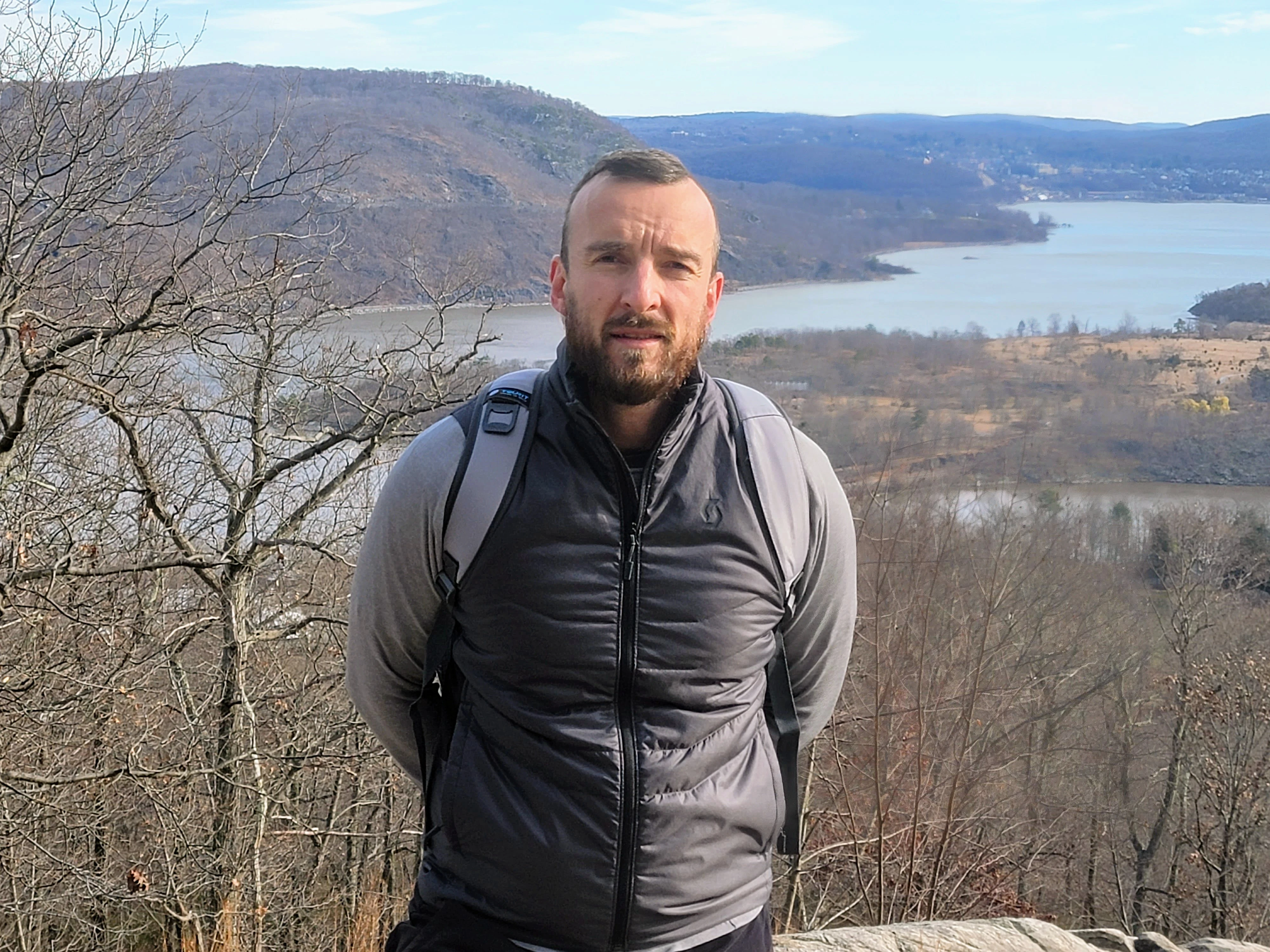

The TRade, Automation, Analytics and eXecution (TRAAX) Engineering team is responsible for maintaining and evolving Bloomberg’s EMS. First, let’s meet Engineering Manager Alex Bozic, who leads the team.
Tell us about your career path.
After finishing a dual degree (Mathematics and CS) at CUNY, I joined Bloomberg’s Commodity Exchange group, where I was responsible for the software that would send client orders directly to the exchange for execution.
After learning a lot about exchange connectivity and futures trading, I moved to work on the initial version of our Global Sell-Side Equity Order Management System (GSSEOMS), where I was responsible for building out our quote recap and trade monitoring. Developing such a system from scratch was one of the more challenging — and rewarding — parts of my early career.
After finishing the initial version of the system, I found an exciting opportunity with our Risk Analytics system. This eventually grew into my first leadership role. After working a couple of years on a real-time risk engine that processed billions of ticks a day, I was recruited to re-architect Bloomberg’s email platform, known as MSG, to scale to the ever-growing demands of our client base.
Once that transformation was complete, I was asked to come up with a volatility calculation proof of concept (PoC) for our Equity Derivatives business. That was right after the market turmoil in 2008, when volatility had not reached those heights in a generation (or two). After having the PoC grow into one of the 100 most-used applications on the Bloomberg Terminal, I looked for another opportunity and found it with our pre-trade transparency tools, where we used, among other strategies, machine learning models to structure pricing information in the over-the-counter markets.
My role grew until I was responsible for all of Bloomberg’s Fixed Income Pricing products. Over the next couple of years, we added multiple Risk products to this product portfolio.
Finally, I moved to my current role. Eight roles and 21 years later, I am excited about the product I am currently responsible for and eagerly await my next challenge.
What are some of the unique technical challenges your team needs to tackle?
Supporting an enterprise system might not sound unique in the industry, but it is fair to say we do that in the truest sense of the term. Though different people have different definitions for what an enterprise system is, it is generally considered any large-scale system that supports most of the necessary operations for a given business. In other words, if you are using an enterprise system, your business functioning on a day-to-day basis depends on this system being operational. Such systems are designed, built, and marketed to target the needs of entire organizations, as opposed to individual clients. Furthermore, if that system is an enterprise trading system, real capital is on the line at any moment.
Given that, a lot of our technical challenges revolve around how we deliver client value while maintaining reliable, resilient, fault-tolerant, and highly performant real-time trading systems. This is compounded by the feature richness, and therefore complexity and interconnectedness, of the trading system itself, as well as the upstream (e.g., order management and portfolio management) and downstream (e.g., broker, venue, and exchange connectivity) systems. Everything needs to be perfectly orchestrated for the entire system to function properly.
To tackle this, we are constantly moving to a more operationally aware system. The DevOps Handbook and related literature have tremendously influenced our thinking. In addition, the way we model our transactional data is tremendously important, as well as the need for consistent interfaces between the various subsystems.
What’s your strategy for choosing team members?
Over the years, I have learned to actively seek out diverse people, opinions, and cultures as a way to learn and grow myself. As noted above, I’ve lived that, serving in eight different roles in six different organizations during my 21 years at Bloomberg. This has been invaluable for my own growth as an engineer, a manager, and a person. As someone once told me, once you gain the perspective of others, it’s very hard to lose it.
Furthermore, I’ve seen that the best systems that have stood the test of time have been a joint effort of people who are radically different in a variety of ways. There is much research to back that up as well. To me, explicitly seeking out diversity is a win-win for the people that are part of that organization — and the organization itself. People grow faster, and organizations build better products. Easy choice.
Peter Senge, the author of The Fifth Discipline, wrote, “A company’s only sustainable competitive advantage is the ability to learn faster than its competitors.” Learning faster is easier with a diverse group of people.
What skills do you look for when hiring engineers for your teams?
We look for technical people who are collaborative, curious, and have a growth mindset.
As Google’s re:Work research showed, some of the key dynamics to team effectiveness and success are the psychological safety of a team and how it went about learning. Psychological safety starts with building trust with your co-workers, and people who are collaborative and help one another build that trust much faster.
Curious people ask a lot of questions. They do this not only to understand the subject matter more deeply, but also to come up with a better understanding of what the client needs. Given the complexity and interconnectedness of our business and systems, we need this kind of deep understanding to move forward quickly.
Though there are various definitions of what a growth mindset is, the way I’ve seen it manifest itself is in hard work, being thoughtful about your craft, seeking input from others, and not getting caught up in who gets the credit. Someone with this mindset is a terrific person to work with, and the more people like this you have around, the more you and the organization will grow.
What are some of the factors driving the rapid growth of your group?
The primary drivers are the growing demand in automation, pre-trade and post-trade analytics, and the need to scale up the trading system to be able to manipulate thousands of orders at any point in time. But, there is also a push towards consolidation to a single trading system that can handle multiple asset classes. Essentially, this combined system completely re-imagines what our trading system will look like in a couple of years from now.
How do you foster culture on your team? How did that change during the pandemic?
Historically, given our open floor space for everyone, our culture was easy to observe and therefore spread quite organically. More than anything we have a learning culture, where people collaborate a lot, and figure out things with one another, no matter how small.
During the pandemic, we had to rethink things. We looked at what some of the remote-first companies (like GitLab) had done with regards to learning and collaboration and sought to implement what worked best for each team. For example, a couple of teams created great short learning videos that taught specific things about the system (e.g., about the production environment or how some aspect of the build system works). The goal was to mimic the quick conversations that we traditionally had at our desks.
What else would you like to share about your Bloomberg experience?
Last year, one of our Engineering teams formed a group-wide cultural initiative with the intent of educating the team about the cultural diversity that exists within it, with the goal of ultimately helping to shape what the organization’s culture should look like.
The Diversity & Inclusion (D&I) scrum team is made up of volunteers who rotate every quarter or so. They have worked on many D&I initiatives across the company. One example was their work with our hiring team on a gender pronoun “neutralizer” proof of concept, which would automatically replace gender-specific pronouns with neutral ones (like “they”/”them” or “the candidate”) in the candidate feedback forms that are used in our interviewing and hiring processes. Another example was working with the internal team that supports our bug tracking system on promoting simple “thank you’s” throughout the system and aggregating them into an internally public “Thank You” dashboard to recognize those people who are being helpful to others.
“A lot of our technical challenges revolve around how we deliver client value while maintaining reliable, resilient, fault-tolerant, and highly performant real-time trading systems.”
– Alex Bozic
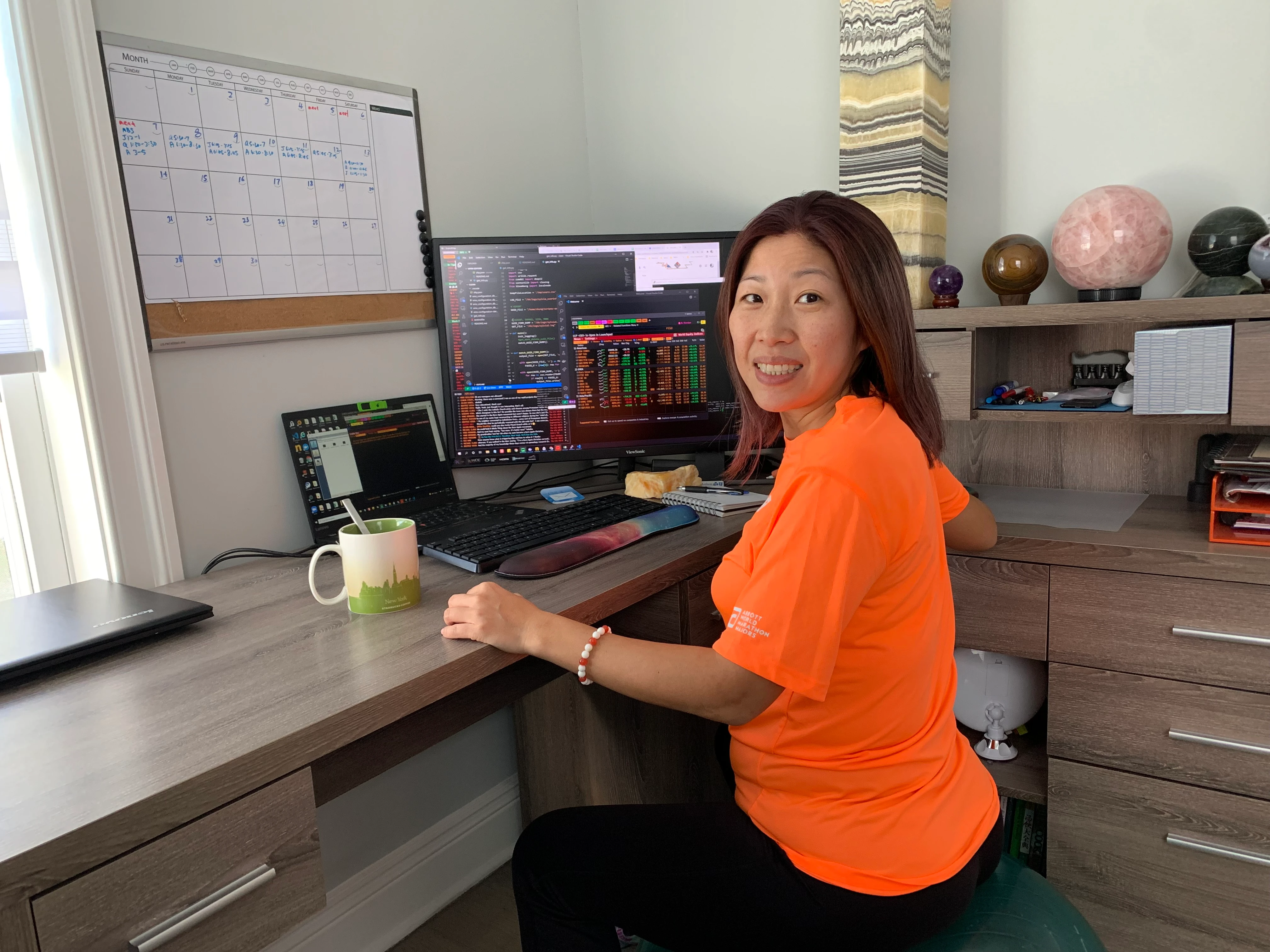

Sylvia Hung manages the Execution Management System (EMSX) Workflows group, where she leads five engineering teams that help support workflows for a trading application that executes critical trades that move the financial market around the world. She joined Bloomberg 21 years ago.
What’s your biggest challenge? What inspires you most about your work?
As technology continues to evolve, our biggest challenge is having to decide when to use new technology. I am inspired by the giving spirit found in our company culture. Not only that, we help each other when we work on a project. Every time, when anyone needs help, people offer help without hesitation. People go out of their way to help others and the community.
How do you keep things interesting after so many years at the same company?
Not only have I been in the same company, but I’ve been in the same team. I was able to see how the functionality of the system continues to grow and evolve from when there were just hundreds of clients to today when more than 20,000 clients are trading trillions of dollars each day using our system.
Bloomberg’s technology has continued to change through the years. When I first started, it was just one main task written in Fortran and C. Today, we are working with industry-leading open source technologies such as Apache Cassandra and Apache Kafka, building our services using C++ on Linux, and its front-end uses JavaScript and TypeScript. Recently, we started using React to build our user interfaces.
How does your involvement with Bloomberg’s D&I Communities impact your life? What are some of the activities you’re involved with?
I worked with a couple of female leaders and created a local group called Women in TRAAX, ETN and QA (WiTEQ). It is easier for a woman to talk to other women, and having our community helps us share and discuss the challenges we face every day. We worked on bringing tech talks to the group and creating mentorship sessions to provide opportunities for participants to interact with senior leaders and help them grow. I also do one-to-one mentorship to encourage, guide, and develop future leaders. Serving as a mentor also helps me grow.
How do you inspire teams to innovate? What are some examples of recent innovations?
Never stop dreaming. When you see a problem, you have a great opportunity to improve the situation. Four years ago, my team had to migrate all of the actions for EMSX, Bloomberg’s equity EMS. I dreamed out loud and said, “If the code can write itself and we only focus on the difficult pieces, that will be great.” During one of our internal hackathons, one of my team members decided to create a code generator. In the end, my team adopted the code generator and we were able to surprise our business and deliver against an extremely tight deadline.
Another example is that we had accumulated a lot of JavaScript code and decided to switch to TypeScript, but we had a lot of code to convert. One of my team members decided to introduce us to an open source tool called codemod that was able to help us speed up the conversion process.
What else would you like to share about your Bloomberg experience?
Fortunately, I was selected by my manager to participate in the company’s Growth, Opportunities, Access and Leadership (GOAL) 2.0 Program, which is designed to accelerate the growth potential of high-performing women and ethnically diverse employees. As part of this initiative, I was paired with a mentor and sponsor, which helped me grow my network with other women leaders across the company. As part of the program, I am regularly being provided tools to help me understand how to achieve my next career goal. I was recently promoted to Manager from Team Lead.
“It is easier for a woman to talk to other women, and having our community helps us share and discuss the challenges we face every day.”
– Sylvia Hung
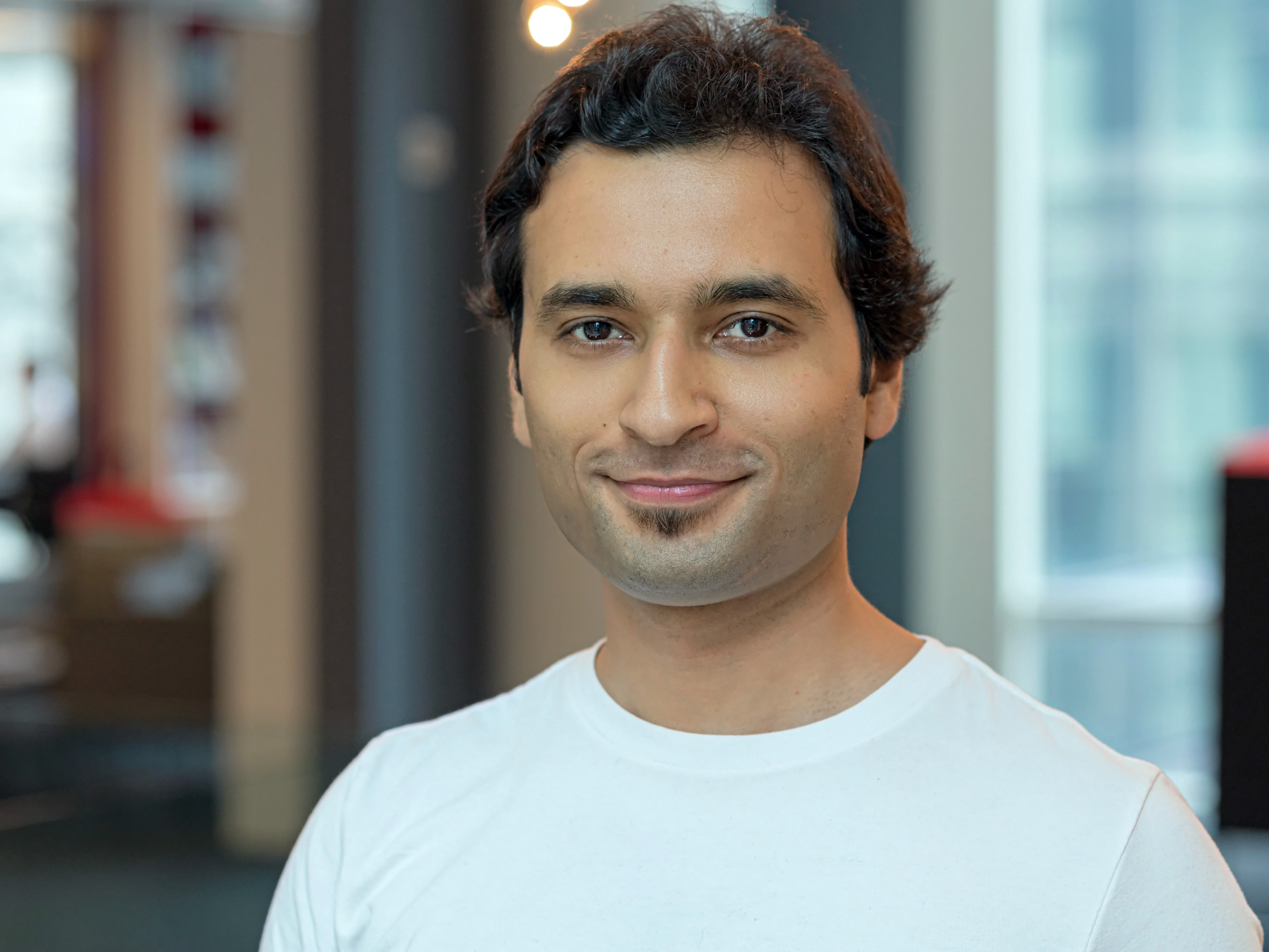

Karan Mehra, a senior software engineer in the TRAAX department, has been at Bloomberg for 11 years. He is a full-stack engineer and is heavily involved in D&I initiatives and the “Champ Board,” a group of engineers that run the “Champs and Reps” program, which gives engineers the opportunity to be technical leaders and have an impact beyond just their own team.
Tell us about what you’re working on now and what your biggest challenge is. What inspires you most about it?
On the Engineering front, I’m currently working on a project to add more automation to continue enhancing our Equity Trading solution (EMSX). The idea is to figure out how we can identify bugs before they reach clients via better UI automation testing, as well as how we can use automation to respond to and troubleshoot bugs when they inevitably do sneak into our code.
As an active contributor to Bloomberg’s D&I initiatives, I’m part of a small group of engineers running a mentorship program for other TRAAX engineers. Based on studies, mentorship is disproportionately beneficial to folks from underrepresented communities, so that was our motivation. However, we haven’t restricted participation to any one group, because diversity and inclusion go hand-in-hand, and we don’t want to exclude anyone.
On the Champs (and also D&I) front, I’m part of a working group that is reviewing the state of both diversity and inclusion in our cross-Engineering technical communities. Given our unique “no roles” organizational structure at Bloomberg, these technical communities are crucial to technical leadership at an Individual Contributor (IC) level. So, we want to make sure we don’t have blind spots when it comes to making these opportunities equally accessible to all engineers.
How do you keep things interesting after so many years at the same company?
When I attended the Bloomberg Info Session at Georgia Tech’s Career Fair in 2010, I heard one of the Bloomberg engineers at the booth remark, “I’m so excited to work here after all these years because there is never a day you don’t learn something new!” I initially rolled my eyes and dismissed it, but I still hung around for the free pizza. Today, I’m that guy (after 11 years at the same company, I’m basically a dinosaur when it comes to my generation), and it turns out that they weren’t just parroting the company sales pitch. You really do learn something new every day here at Bloomberg.
When it comes to technology, our Engineering department solves problems in just about every area of Computer Science, all the way from low-level database query optimization to the use of high-level artificial intelligence to predict trends. Even within a single team, you get to solve so many of those problems, so there’s literally never a dull day. You also learn that there’s so much to learn as an engineer beyond machines, and that you wish Computer Science degrees came with mandatory courses in communication, negotiation, psychology, etc. Machines are almost simpler in that regard.
The second, and arguably bigger, reason I’m here, is the people. We are not only encouraged, but also incentivized to spend time in our day job volunteering towards philanthropic efforts. I was blown away when I learned that the vast majority of our net profits go to philanthropy. I also care deeply about D&I, which I get to work on with the full support of my managers, all the way up to Alex.
You’re very involved in a variety of D&I initiatives. Tell us about why this is important to you and some of the things you’ve played a role in to make our workplace more inclusive.
It is important to me because I have always been treated well. It wasn’t until halfway through my career that I naively believed that that was how every other engineer was treated — regardless of gender, origin, sexuality, or any other human facet. I remember how cheated (and initially, in denial) I felt when I started to learn that tech was not the meritocracy a lot of us grew up believing it was. How could it not be!? You write good code, you move ahead. What makes this especially difficult for people like me to see — a brown, middle-class immigrant man from India that has been treated as an equal in America — is the “brown” + “middle-class” + “Indian immigrant” part. If someone like me is being treated as an equal, surely everyone else is, right?
What I didn’t realize was that the “man” part of that description held such a disproportionately beneficial weight. I have had women managers for most of my career (including Sylvia). Plus, in my hometown in India, girls consistently out-ranked the boys in high school and above. So I just always assumed that there were way fewer women in tech mainly because they didn’t want to be there, not because of a lack of ability. The third option never even occurred to me: that they were both willing and able, but there were other factors at play.
Once I learned about the systemic and cultural obstacles that women engineers face in tech, I wanted to help. The first meaningful D&I initiative I got involved in was to co-lead the “B-Techies” program. This collaboration between Bloomberg Philanthropies and Bloomberg Women in Tech (BWIT) created an after-school program to get more middle-school girls from underprivileged backgrounds interested in Science, Technology, Engineering, and Math (STEM), through fun activities like building “earthquake” (jello) resistant towers out of straws, making light-up holiday cards by creating electrical circuits, and more. I think my desire to do this comes from my family, where my parents, grandparents, and others have always played a very active role in promoting education for girls. Soon after B-Techies, I had the opportunity to kick off a BWIT Allyship Initiative, which is probably the thing that’s been closest to my heart during my career here. I’m also involved in running the aforementioned TRAAX Mentorship Program and the D&I Working Group for our technical communities.
How does the collaborative environment at Bloomberg create opportunities to learn new skills and expand your expertise?
My high school and undergrad experiences were probably not the healthiest growth environments, based on the systems, people, and culture around me. I always felt that asking a question made me look like a fool. So I didn’t ask too many except when I was around family, and I often pretended I knew the answers.
Working within the collaborative environment at Bloomberg broke my years-long insecurity very quickly. I found that it wasn’t only okay to say, “I don’t understand that,” but also was encouraged to do so. That is also the one piece of advice I give every candidate I interview when they ask what would make them a successful Bloomberg Engineer. I tell them to “ask all the questions you can think of because that will make us all better.” We often need fresh eyes to question decades of assumptions in our software and our culture. A simple “why” is just enough to help us make groundbreaking changes.
“When it comes to technology, our Engineering department solves problems in just about every area of Computer Science, all the way from low-level database query optimization to the use of high-level artificial intelligence to predict trends.”
– Karan Mehra
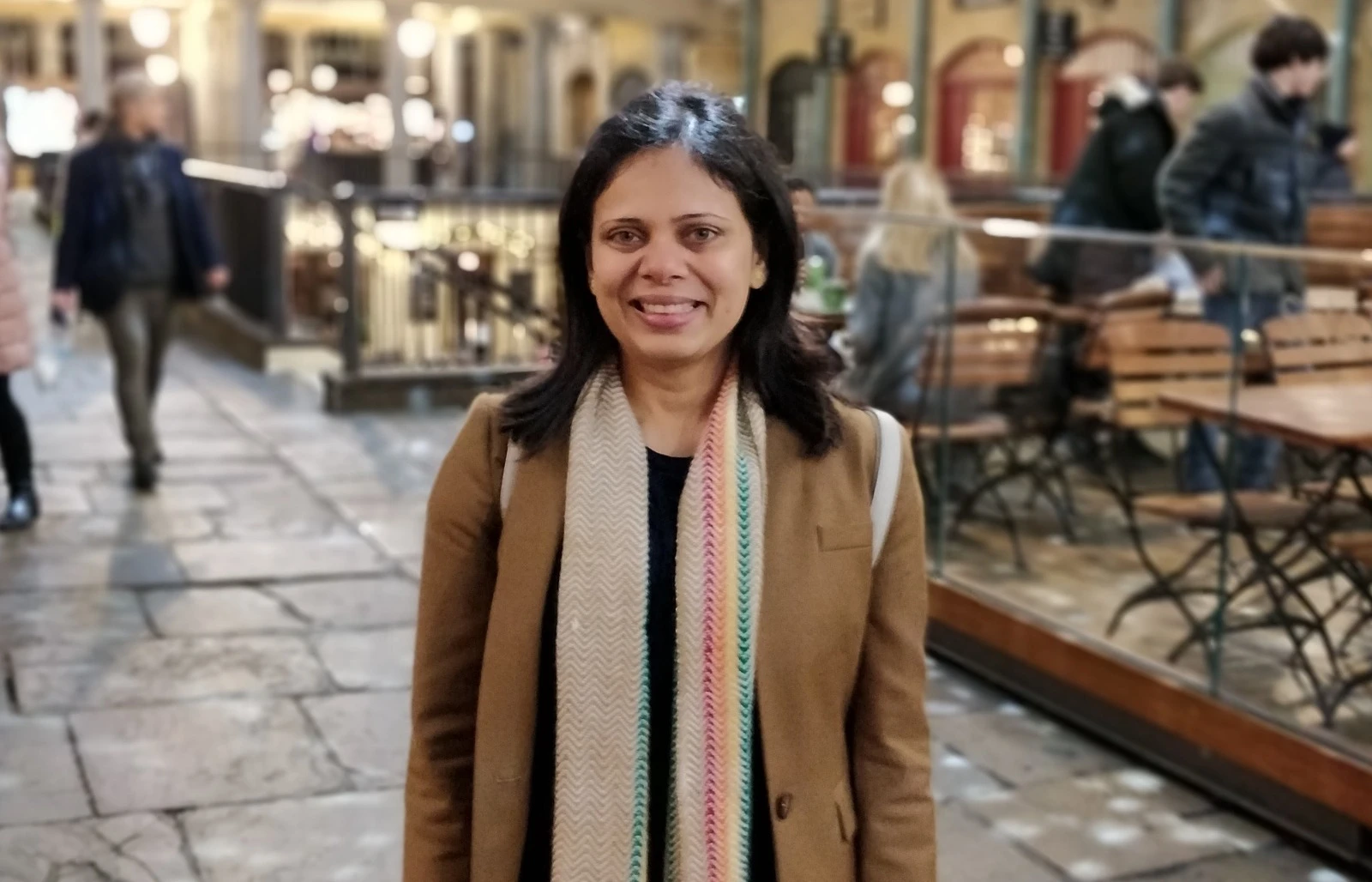

Krishna Achari is a senior software engineer who has been with Bloomberg for 10 years. Her team provides a single platform to trade simple or complex futures strategies, as well as contingent/algorithmic strategies in global futures exchanges. This platform, called Tradebook, provides access to 30 futures exchanges through over 50 exchange member partners.
Tell us about what you’re working on now and what your biggest challenge is. What inspires you most about it?
I am currently working on new algorithmic strategies for one of our biggest clients. Making an impact in this industry and in customers’ lives is motivating. It is important to be a part of something that is big and important to Bloomberg and makes a difference in our clients’ experience. My contribution provides me with a sense of ownership in both my own work and my overall work environment.
How do you keep things interesting after so many years at the same company?
It is hard to believe that I celebrated my 10-year anniversary at Bloomberg earlier this year, after previously working for three different companies in six years before coming here. Bloomberg and my team have always helped me grow professionally, take up new challenges, and learn new technologies. I look forward to new projects that encourage me to learn new skills. I learn, contribute, and make a positive impact on my career, Bloomberg, and our clients; the job is always exhilarating.
How have you been able to manage your career at one company for more than a decade? What advice do you have for others who might be on a similar path?
Bloomberg has offered me fantastic professional growth and leadership opportunities, training programs, and mentoring. Work-life balance policies, great workplaces, and employee wellness programs really help in the long run. The Tradebook team gave me opportunities to work closely with clients and be part of the whole journey from defining a problem to delivering a solution. I stay curious and the daily job is what drives me. I worked in Tradebook for more than 10 years and every day is still challenging and gratifying. When and if I choose to explore different challenges outside my team, Bloomberg offers great opportunities internally.
How do you foster a collaborative, inclusive environment at work?
In any organization, the way information is handled determines whether it becomes an obstacle to or an enabler of collaboration. Bloomberg enables and rewards transparent communication company-wide. It is a vitally important tool for our team in championing collaboration.
Diverse views are most likely a company’s most important asset and Bloomberg, with its flat organization allows all team members to contribute. Consistent company-wide goals help various teams create a single vision, collaborate, and work towards it.
Anything else you would like to share about your Bloomberg experience?
Bloomberg’s philanthropic efforts give me great pride. I volunteered for a few of our corporate philanthropy programs. Working at Bloomberg exposes you to loads of opportunities and activities from being part of half marathons and being part of the rehearsal for The Umbrella Project by Cirque Bijou during Lumiere London to planting trees, just to name a few of them. It gives me great joy to be part of those programs and make a real difference.
“It is important to be a part of something that is big and important to Bloomberg and makes a difference in our clients’ experience. My contribution provides me with a sense of ownership in both my own work and my overall work environment.”
– Krishna Achari
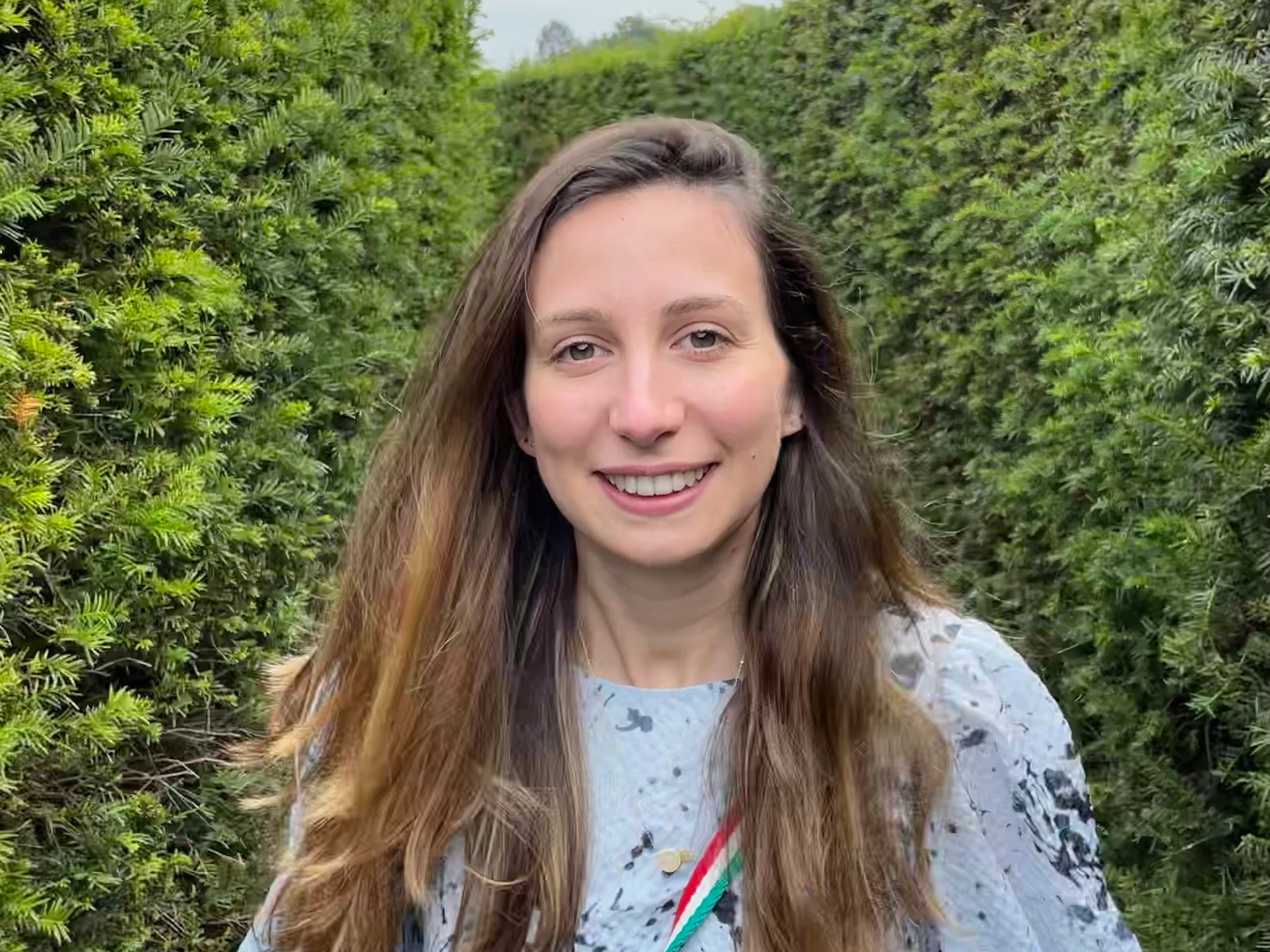

Hannah Case is a senior software engineer on the FI/FX EMS team, where she builds trading applications for fixed income and foreign exchange instruments. She started her Bloomberg career in London nine years ago and moved into her current role in New York three years ago.
Tell us about what you’re working on now and what your biggest challenge is. What inspires you most about it?
I’m running a project to re-write FXEM, our EMS for FX trading, to use a new technology stack. The idea is to unite the various trading systems at Bloomberg, thereby reducing code duplication and giving our users a more uniform experience.
It’s challenging because these trading systems have grown over many years from different corners of the company. We need to find creative ways to consume data from systems with different behaviors and publish them in exactly the same way. From the user experience side, we work closely with our product managers to find compromises between the different workflows.
I find it exciting because I’ve seen the transformation this approach can facilitate. Before it existed, I was on the opposite side, consuming order data to enrich my application. It was a long and cumbersome process that we had to repeat for each individual trading system. One person had an idea of how we could create a common data model with common interfaces, and that idea birthed a team that is now powering some of the most important applications at Bloomberg.
How have you been able to manage your career at one company for more than a decade? What advice do you have for others who might be on a similar path?
I would share the same advice my manager once gave me, which is to go towards opportunities rather than shying away from them because you don’t know what they may lead to. Early in my career in London, I had just started interviewing university candidates and I was terrified of it (it can be scary from our side too, you know). I told my manager that I wanted to give it up. Knowing what kind of opportunity I would be throwing away, he encouraged me to think about why I was afraid of it and try to address that instead.
One opportunity led to another, and I ended up traveling all across Europe interviewing students at careers fairs and running events at Women in STEM conferences. It helped expand my network and visibility across the company.
Opportunities can come in many forms. A friend of mine was really interested in Continuous Integration/Continuous Delivery (CI/CD), and they started contributing changes to one of Bloomberg’s CI/CD frameworks. He was asked if he wanted to spend a few months with a CI/CD team. As a result, he has helped improve software development workflows across the entire company and is now a “Champ” — a specific role for technical leaders at Bloomberg.
How do you foster a collaborative, inclusive environment at work?
I once worked in a project team of just three people, where we all knew the entire codebase as well as one another. This meant we could plan out changes as a group, brainstorm together when anyone was stuck, and we could quickly adapt if the project changed direction. It was probably the most efficient project I’ve ever worked on – and the most fun! This is the style of collaboration I’m always striving for.
I’m now working on a much bigger project across multiple teams, but we still innersource work across teams. Not only does this allow us to go to where the work is needed, but also it gives us a much better understanding of each other’s systems. We also have regular design discussions with the entire team, starting with a presentation for those less familiar with the code, as well as brainstorming sessions with smaller groups to give everyone an opportunity to speak up. This approach will sometimes reinforce an idea I already had, while other times it will take me in a completely different direction of which I had never thought.
What else would you like to share about your Bloomberg experience?
What I never expected when joining Bloomberg nine years ago was the sheer variety of things I’d get involved with outside of my main role as a software engineer. Through philanthropy, I’ve taught programming classes to children at local schools. I’ve written questions for coding competitions and tested puzzles for intern events. I’ve spoken on panels about my career and given tech talks at universities. I’ve attended loads of amazing events at the Women of the World Festival in London, of which I’m really proud to say Bloomberg is the main sponsor. When I told my manager that I wanted to move from London to New York, I got a huge amount of support with the immigration process, finding a new team, finding an apartment, and so on. All these are just a bonus on top of the really interesting and challenging projects in my day-to-day work.
“I would share the same advice my manager once gave me, which is to go towards opportunities rather than shying away from them because you don’t know what they may lead to.”
– Hannah Case
Some open roles with our TRade, Automation, Analytics and eXecution Engineering team